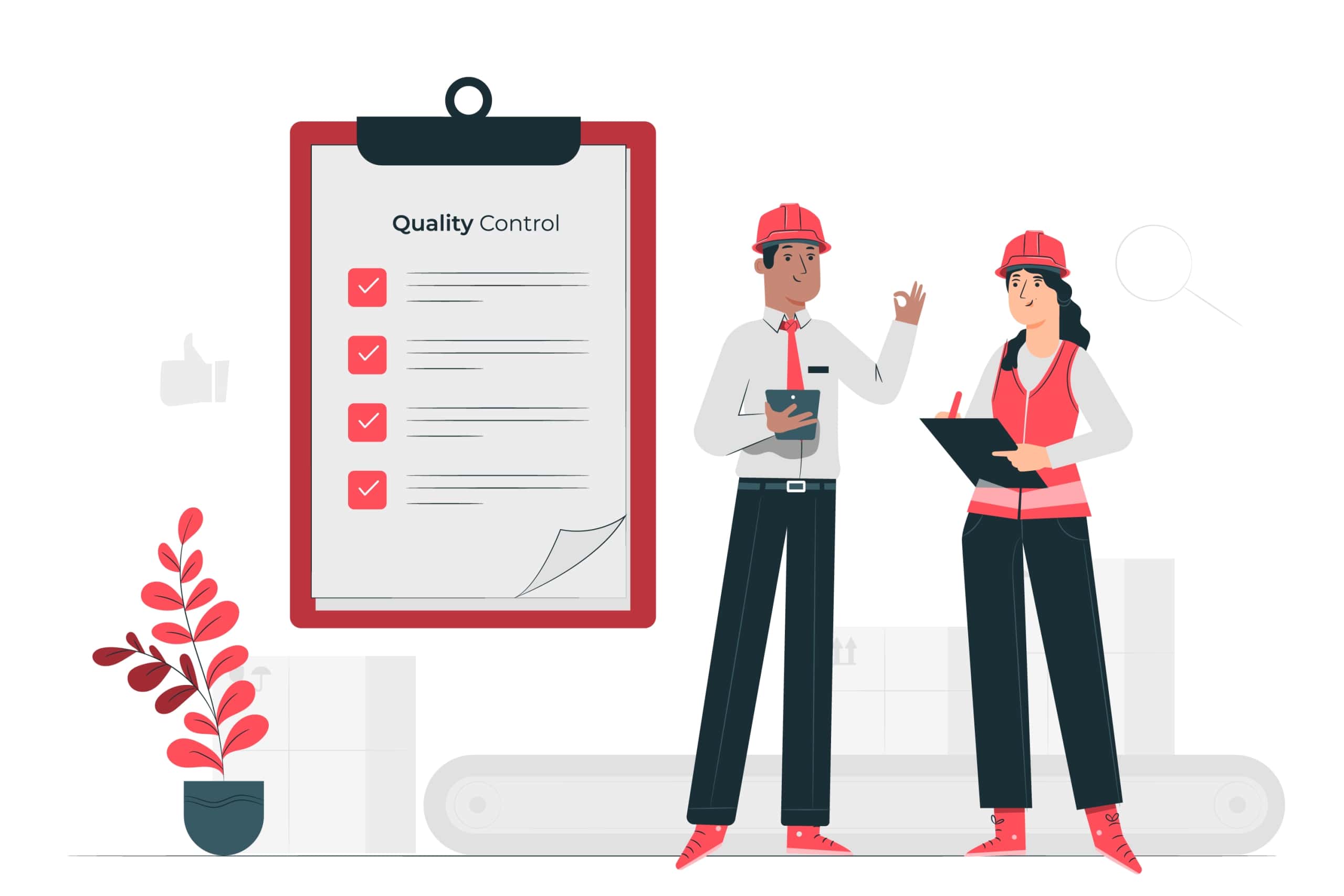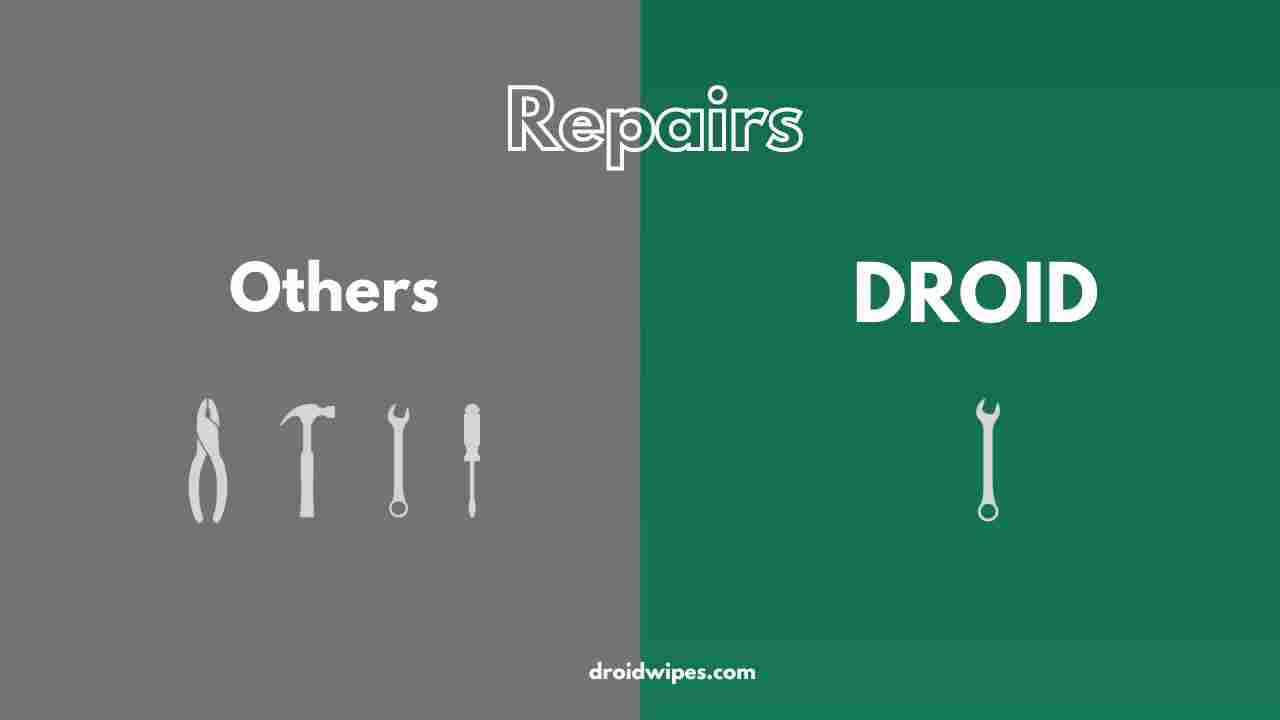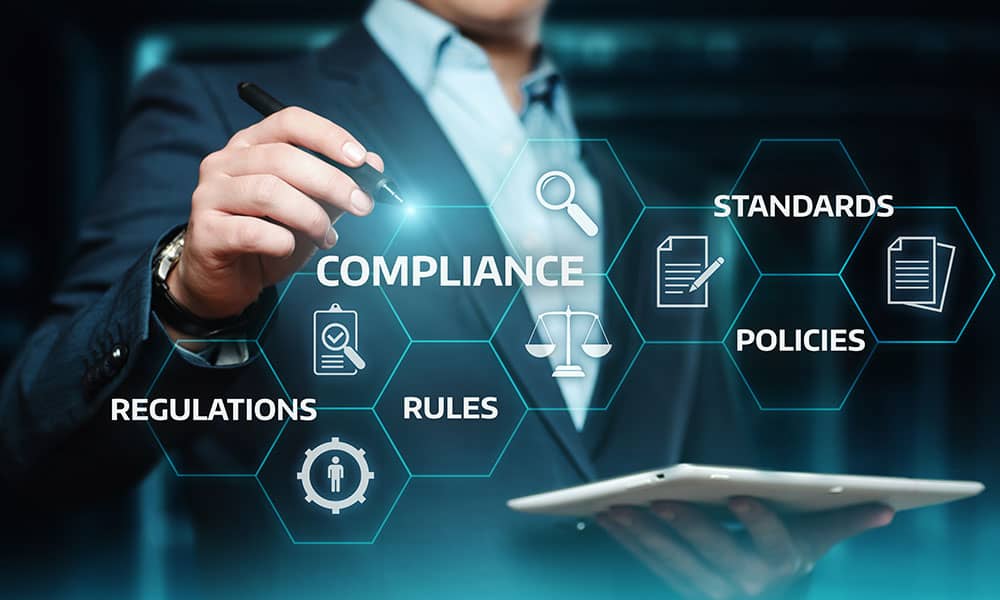Ensuring Consistent Product Quality
Consistency in product quality is crucial for maintaining consumer trust and happiness in the fiercely competitive wet wipes sector. Consistent calibration of manufacturing machinery is essential for obtaining this uniformity. Calibration adjusts wet wipes machine settings to predetermined criteria, guaranteeing that every wet wipe manufactured adheres to the same rigorous quality norms. In the absence of frequent calibration, wet wipes machines may deviate from their best configurations, resulting in fluctuations in product attributes such as dimensions, moisture levels, and texture. These discrepancies may lead to a below-average user experience, which can damage a brand’s image and result in consumer unhappiness.
Calibration facilitates the detection and rectification of any deviations from the intended production parameters. Calibration guarantees that each wet wipe is manufactured with meticulous supervision, ensuring adherence to precise requirements. Accuracy is crucial when it comes to wet wipes, since even little deviations may impact their effectiveness and user contentment. For example, a wet wipe that lacks sufficient moisture may not properly clean, but one that is too wet may leave an unwanted residue. Regular calibration guarantees that every wipe maintains the optimal balance of moisture and other essential characteristics, thereby preserving product integrity and ensuring customer pleasure.
Furthermore, maintaining a constant level of product quality is not just limited to satisfying consumer expectations, but it also has a direct influence on adhering to regulatory requirements. The wet wipes sector is subject to stringent restrictions to guarantee both safety and effectiveness. Regular calibration guarantees that manufacturing processes conform to these requirements, hence limiting the possibility of non-compliance and related legal complications. Adhering to regulatory requirements demonstrates a company’s dedication to maintaining high levels of quality and safety, therefore bolstering its reputation in the market.
To ensure constant product quality in wet wipes production, frequent calibration is a crucial procedure. It ensures that each product adheres to rigorous standards, fulfills client expectations, and meets regulatory mandates. Wet wipes manufacturers may achieve long-term success in the competitive wet wipes sector by giving priority to calibration. This allows them to maintain the quality of their brand, cultivate client loyalty, and ensure their continued success.
Reducing Production Downtime
In the field of wet wipes production, unforeseen periods of halted manufacture may pose a substantial challenge, resulting in expensive setbacks and interruptions. Regular calibration of equipment is a very effective strategy for reducing this danger. Improper calibration of machinery increases their susceptibility to faults and breakdowns. These problems may result in abrupt interruptions in output, necessitating laborious and costly repairs. Regular calibration ensures that all machine components are working properly and within their stated specifications, greatly minimizing the chances of unexpected failures.
Calibration serves as a proactive maintenance procedure. By conducting frequent inspections and making necessary modifications to the equipment, possible issues may be detected and resolved proactively, preventing significant malfunctions. This proactive maintenance method ensures that minor faults are promptly addressed, so avoiding them from growing into major ones that might result in prolonged periods of inactivity. For instance, a little deviation in the machine’s configuration may initially only result in modest inefficiencies. Nevertheless, if not dealt with, it may result in substantial harm necessitating extensive repairs. Regular calibration detects these tiny faults at an early stage, ensuring smooth and uninterrupted functioning.
In addition, frequent calibration improves the dependability of production schedules. Adhering to strict production timetables is crucial in the manufacturing industry. Unplanned periods of inactivity may interrupt these predetermined timetables, resulting in delays in the completion of orders and possibly causing dissatisfaction among consumers. To maintain a continuous production flow, wet wipes manufacturers must ensure that equipment is continually calibrated and running at their best level. This level of dependability ensures that delivery dates are always met, ensuring customer satisfaction and maintaining a strong reputation in the market.
The cost consequences of minimizing downtime via calibrating are also significant. Production stoppages not only cause delays in operations but also result in extra expenses like repairs, overtime compensation for staff, and possible fines for late deliveries. Regular calibration reduces these expenses by guaranteeing that equipment operates with optimal efficiency and dependability. Investing in calibration yields benefits in the form of reduced maintenance expenses, fewer interruptions, and more predictability in production cycles.
Ultimately, consistent calibration is crucial for minimizing production interruptions in the manufacture of wet wipes. It mitigates unforeseen mechanical malfunctions, improves the dependability of production timetables, and minimizes maintenance expenses. Wet wipes manufacturers can guarantee seamless and uninterrupted production, effectively satisfying client expectations and preserving their competitive advantage in the market, by integrating frequent calibration into their maintenance regimen.
Optimizing Resource Utilization
Efficiently using resources is crucial for preserving profitability and sustainability in the fiercely competitive wet wipes manufacturing business. The regular calibration of equipment is crucial for optimizing the process. Optimally calibrated machines function at maximum efficiency, guaranteeing the optimal use of raw materials and energy while minimizing needless waste. This efficiency has a direct influence on financial performance, by decreasing expenses and enhancing overall efficiency.
If wet wipes machines are not properly calibrated, they may use excessive resources. For instance, if a wet wipes machine fails to dispense the correct quantity of liquid onto the wipes, it might cause overuse of the liquid solution, resulting in higher material expenses. Over some time, even little inefficiencies might accumulate, having a major influence on the wet wipes manufacturing costs. Regular calibration guarantees that wet wipes machines are functioning within their ideal parameters, using an appropriate quantity of resources to manufacture wet wipes of superior quality.
Furthermore, energy consumption plays a crucial role in the usage of resources. Wet wipes machines that are not properly calibrated in the manufacturing process typically need increased energy consumption, resulting in elevated energy expenses and a more substantial environmental impact in terms of carbon emissions. Through the meticulous maintenance of accurate calibration, wet wipes manufacturers may guarantee optimal performance of their equipment, resulting in reduced energy consumption and enhanced sustainability of their operations. This not only decreases operating expenses but also conforms to environmental sustainability objectives, which is becoming more crucial in the current market.
Calibration is essential for minimizing material waste. Incorrect machine configurations may cause imperfections in the end product, leading to the squandering of resources and higher manufacturing expenses. For example, if a wet wipes machine erroneously cuts wipes to an improper size or applies an inaccurate quantity of solution, the faulty wipes will have to be disposed away. Regular calibration reduces these inaccuracies, guaranteeing that every wipe manufactured fulfills quality requirements and minimizing the amount of waste created during manufacturing.
In addition, enhancing resource allocation via calibration helps enhance inventory management. Wet wipes manufacturers may optimize their material use and prevent excessive or insufficient inventory of raw materials by accurately calibrating machinery. Such accuracy aids in the maintenance of a well-balanced inventory, leading to decreased storage expenses and mitigating the potential for material shortages that may interrupt production.
To summarize, frequent calibration is crucial for maximizing resource efficiency in the production of wet wipes. It guarantees the optimal use of raw resources and energy, minimizes material wastage, and enhances inventory control. Wet wipes manufacturers may improve their efficiency, save costs, and encourage sustainable practices by including frequent calibration in their operating plan. The dedication to optimizing resource allocation not only enhances profitability but also reinforces the company’s image as a conscientious and innovative leader in the industry.
Meeting Regulatory Standards
Compliance with regulatory norms is very essential in the wet wipes manufacturing sector. The purpose of implementing these standards is to guarantee the safety, effectiveness, and quality of the items. Regular calibration of manufacturing machinery is an essential technique that enables producers to continuously satisfy strict regulatory standards. By ensuring that machine settings follow industry standards, wet wipes manufacturers may create wet wipes that not only meet but often beyond the legal requirements. This helps protect their operations and maintain their market image.
The regulatory criteria for wet wipes manufacture include several factors, such as the quality of materials, the wet wipes manufacturing process, sanitary conditions, and the performance of the wet wipes. Regular calibration guarantees that the equipment used in manufacturing functions within the exact specifications established by these requirements. Proper calibration of liquid dispensing systems is essential to guarantee that each wipe has the precise quantity of cleaning or disinfecting solution, which is crucial for both safety and efficacy. Noncompliance with these criteria may lead to the production of items that are either inefficacious or hazardous, hence potentially necessitating recalls, legal repercussions, and erosion of customer confidence.
Furthermore, consistent calibration is essential for preserving thorough and precise documentation, which is often necessary for regulatory checks. Calibration records provide evidence that a manufacturer has taken the required measures to guarantee the proper functioning of their equipment and the management of their manufacturing processes. These documents serve as vital evidence during inspections or audits, demonstrating adherence to regulatory requirements and reducing the possibility of fines or punishments. Keeping accurate calibration records is not just a recommended practice but also a mandatory obligation in some regulatory regimes.
Failure to adhere to regulatory requirements may result in significant consequences, such as the recall of products, imposition of penalties, and the suspension of industrial activities. Regular calibration mitigates these risks by ensuring that all equipment is functioning within the prescribed boundaries and generating goods that adhere to the regulations. As an example, while manufacturing antibacterial wet wipes, regulatory authorities may mandate a certain concentration of active chemicals in the wipes. Regular calibration guarantees that the system continually produces wipes with the correct concentration, therefore avoiding possible health hazards and guaranteeing adherence to regulations.
Furthermore, adhering to regulatory requirements by consistently calibrating equipment improves a manufacturer’s standing in terms of quality and dependability. Customers, merchants, and partners are more inclined to have confidence in and choose items from a company renowned for meticulous compliance with regulatory regulations. This trust may result in a higher market share, enhanced consumer loyalty, and a competitive edge. Regular calibration is crucial in industries where safety and effectiveness are of utmost importance. By displaying a strong commitment to regulatory compliance, companies may greatly enhance their reputation and position in the market.
Ultimately, consistent calibration is crucial for adhering to regulatory requirements in the production of wet wipes. It guarantees that goods are secure, efficient, and following industry laws, therefore safeguarding customers and the company’s image. To prevent legal complications, reduce the likelihood of product recalls, and improve their reputation in the market, wet wipes manufacturers should keep detailed calibration records and constantly match their wet wipes manufacturing processes with regulatory standards. Regular calibration is essential not just from a technical standpoint but also from a strategic one to ensure compliance with regulations and achieve corporate success.
Enhancing Machine Longevity
The durability of production gear is a crucial aspect in the manufacture of wet wipes, as it directly affects operating expenses and overall effectiveness. Regular calibration is an essential maintenance technique that greatly helps in prolonging the lifetime of this equipment. Calibration optimizes machinery performance, minimizing damage, decreasing failures, and extending equipment lifespan.
Regular calibration facilitates the identification and resolution of small errors before they progress into significant difficulties. Malfunctioning machines may undergo heightened strain on their components, resulting in early deterioration. Instances such as parts that are not properly aligned or settings that are improper might result in vibrations, overheating, or excessive friction, all of which can hasten the degradation of machine components. Regular calibration of machinery allows for early identification and correction of errors, hence reducing needless damage and prolonging the equipment’s lifespan.
Furthermore, wet wipes machines that are calibrated correctly function with greater efficiency, hence decreasing the total burden on the system. Efficient operation refers to the state in which the many components of a wet wipes machine are functioning in perfect synchronization, without placing excessive strain on any one portion. This well-balanced operation not only increases production but also mitigates the likelihood of unforeseen problems. Over time, the continuous and smooth running of a system may result in substantial savings in maintenance and repair expenses, as the frequency of large interventions is reduced.
Regular calibration investments contribute to improved long-term financial planning for wet wipes manufacturers. Companies may optimize their capital allocation by using machines with a longer lifetime, which reduces the frequency of replacements. Wet wipes manufacturers may use their funds towards research & development, marketing, or developing manufacturing capacities instead of investing exorbitant expenses on new gear. Strategically allocating resources may improve a company’s competitive advantage and market position.
Furthermore, consistent calibration guarantees that producers can sustain optimal levels of output without any disruptions. Regular breakdowns resulting from insufficient calibration of machines may lead to substantial production delays, hence impacting the capacity to fulfill client requirements and meet deadlines. Regular calibration decreases the probability of such interruptions, guaranteeing that production schedules are followed and customer expectations are fulfilled. The dependability of a product or service is essential for preserving robust commercial connections and a favorable market standing.
In addition, maintaining the life of equipment by regularly calibrating it contributes to sustainability initiatives. Amidst a time when environmental accountability is of growing significance, diminishing the need for fresh machinery might substantially diminish the ecological repercussions of industrial activities. Wet wipes manufacturers may achieve waste reduction, and carbon footprint reduction, and contribute to sustainable manufacturing methods by optimizing the use of their current equipment.
Ultimately, consistent calibration is crucial for optimizing the lifespan of wet wipes production equipment. Early detection and resolution of faults, improved operational efficiency, decreased maintenance and repair expenses, and enhanced financial planning are facilitated by this. Wet wipes manufacturers may achieve high productivity, fulfill consumer requests, and support environmental objectives by prolonging the lifetime of equipment. Regular calibration is a prudent investment that yields benefits in both the immediate and long term, guaranteeing the robustness and dependability of manufacturing machinery.
Boosting Customer Confidence
Establishing and maintaining customer confidence is crucial for long-term success in the highly competitive wet wipes manufacturing industry. Regular calibration of manufacturing gear is essential for accomplishing the objective of maintaining the highest levels of quality and consistency for every product. When consumers have faith in the consistent and superior quality of the items they get, it enhances their trust in the brand, resulting in more loyalty and repeat purchases.
Consistent calibration guarantees the production of wet wipes that adhere to exact requirements, including accurate dimensions, moisture levels, and uniformity. Ensuring consistency in these characteristics is crucial for achieving client satisfaction. For example, when buyers discover that some packages of wet wipes are excessively dry while others are excessively soaked, their confidence in the product’s dependability decreases. Regular calibration of machinery allows wet wipes manufacturers to consistently produce items that satisfy consumer expectations, hence enhancing customer trust in the brand.
In addition, the use of calibrated machinery decreases the probability of faults and product recalls, which may have a detrimental impact on a brand’s reputation. One instance of product recall has the potential to erode customer trust, resulting in adverse publicity and a decline in consumer confidence. Regular calibration mitigates these difficulties by assuring strict adherence to all manufacturing specifications, hence lowering the likelihood of failures. The wet wipes manufacturer’s proactive approach to quality control instills confidence in consumers, as it demonstrates a strong commitment to delivering goods that are both safe and dependable.
Increased transparency in quality assurance methods promotes consumer trust. Wet wipes manufacturers that consistently calibrate their devices and transparently discuss their quality control techniques show their dedication to achieving high standards. Customers value a wet wipes manufacturer that demonstrates a commitment to upholding rigorous standards and actively takes measures to guarantee the dependability of its products. The brand’s commitment to quality may be emphasized via the use of transparency in marketing materials, packaging, and customer interactions.
Moreover, consistent calibration facilitates adherence to regulatory requirements, which is a vital aspect of establishing consumer confidence. Adhering to industry norms and regulations provides clients with the assurance that the items they use are both secure and efficient. Wet wipes manufacturers that continuously adhere to regulatory standards by regularly calibrating their equipment have a reputation for being dependable and trustworthy. Adhering to regulations is particularly crucial in industries where safety and effectiveness are of utmost importance, such as the infant care or medical-grade wet wipes sectors.
The frequent calibration of equipment ensures a consistent level of quality, which in turn improves the client experience and leads to favorable evaluations and word-of-mouth recommendations. Contented consumers are more inclined to disseminate their favorable experiences with others, ultimately broadening the brand’s outreach and enticing new customers. In the current era of digital technology, when online evaluations and social media have a strong impact on consumer choices, ensuring consistent product quality via frequent calibration may have a substantial effect on a brand’s reputation and customer loyalty.
Regular calibration of wet wipes production gear is essential for enhancing consumer trust. It guarantees uniform product quality, minimizes the possibility of faults and recalls, facilitates adherence to regulations, and improves overall customer satisfaction. Wet wipes manufacturers may cultivate robust consumer trust, develop loyalty, and attract new customers by consistently showcasing their dedication to quality via frequent calibration. The establishment of trust serves as the fundamental basis for achieving long-term success and gaining a competitive advantage in the wet wipes industry.
Implementing Effective Calibration Practices
To optimize the advantages of frequent calibration, wet wipes manufacturers need to adopt efficient calibration processes. These methods guarantee optimal equipment performance, provide constant product quality, and minimize the likelihood of production interruptions. An organized method for calibration includes periodic inspections, the use of accurate calibration instruments, thorough staff training, and detailed documentation.
Regular Inspections:
Establishing a systematic timetable for routine inspections is the first measure in achieving efficient calibration. The inspections should be comprehensive and methodical, prioritizing all essential elements of the gear. Through frequent inspections of the machinery, wet wipes manufacturers may promptly detect any deviations from the established standard configurations. This proactive method aids in averting small faults from growing into significant ones, guaranteeing that the apparatus stays in its ideal operational state. It is important to document inspections and note any modifications made for future reference.
Using Accurate Calibration Tools:
By using precise calibration tools, the accuracy of the calibration process is contingent upon the quality and precision of the equipment used. Wet wipes manufacturers are required to allocate resources toward acquiring top-notch calibration equipment that offers accurate readings. It is important to constantly test and maintain these instruments to guarantee their correctness. The use of sophisticated calibration tools, such as digital micrometers and laser alignment systems, may improve the accuracy of the calibration process. Precise instruments guarantee that modifications made during calibration are dependable, resulting in constant machine functionality and product excellence.
Staff Training:
Successful calibration operations need competent staff who comprehend the significance of calibration and have expertise in using calibration instruments. It is necessary to establish thorough training programs to educate wet wipes machine operators and maintenance personnel on calibration processes and the need to maintain precise settings. The training program should include both theoretical knowledge and practical application to ensure that all team members possess the necessary skills to accurately execute calibrations. Ongoing education and periodic training may ensure that staff members are informed about the most current calibrating technology and optimal methods.
Record Keeping:
Maintaining comprehensive records of calibration operations is essential for monitoring machine performance and guaranteeing adherence to regulations. The records should include details on the date of calibration, the changed parameters, the used tools, and the individuals that were engaged. Frequently examining these data might assist in identifying trends or reoccurring problems that may need more attention. In addition, keeping detailed calibration records may be quite important during audits and inspections, as they show a strong dedication to quality control and compliance with regulations.
Implementing Calibration Protocols:
Implementing calibration procedures is crucial for maintaining consistency throughout the production process. By developing and adhering to standardized calibration methods, wet wipes manufacturers can guarantee that their products meet the required specifications and quality standards. The protocols should specify the calibration frequency, the precise processes to be adhered to, and the permissible tolerances for equipment settings. Standardized procedures provide a well-defined structure for calibration operations, facilitating accurate and consistent job execution by workers. Consistently evaluating and revising these procedures to include technology progress and industry norms may further improve the efficiency of calibration.
Integrating Technology:
Utilizing technology may greatly enhance the effectiveness and precision of calibration procedures. Automated calibration systems can execute modifications with a notable level of accuracy, hence reducing the probability of human mistakes. In addition, the integration of calibration software with the production management system may provide up-to-the-minute information on machine performance and calibration status. This integration enables more effective monitoring and management of the calibration process, guaranteeing that equipment consistently operates within the intended parameters.
Establishing a Culture of Quality:
Fostering a culture that places importance on excellence and accuracy may improve the efficiency of calibrating procedures. Promoting the importance of calibration and its influence on product quality helps cultivate a feeling of accountability and ownership among workers. By acknowledging and rewarding employees who regularly follow calibration processes and contribute to upholding high standards, we can strengthen and solidify this culture even more.
To summarize, the process of adopting efficient calibration processes requires frequent inspections, accurate instruments, thorough training, detailed record-keeping, established methods, and the use of technology. By using these procedures, wet wipes manufacturers may guarantee optimal equipment performance, consistent product quality, and little production downtime. Adopting a methodical approach to calibration not only improves operational efficiency but also ensures adherence to regulations and boosts consumer trust in the brand.








